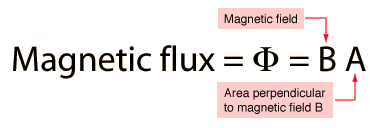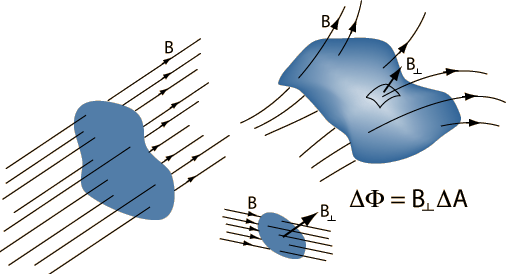Magnetic Flux
Magnetic flux is the product of the average magnetic field times the perpendicular area that it penetrates. It is a quantity of convenience in the statement of Faraday's Law and in the discussion of objects like transformers and solenoids. In the case of an electric generator where the magnetic field penetrates a rotating coil, the area used in defining the flux is the projection of the coil area onto the plane perpendicular to the magnetic field.

| Magnetic flux illustration | Electric flux |
Magnetic field concepts
Faraday's Law concepts
| HyperPhysics***** Electricity and Magnetism | R Nave |
